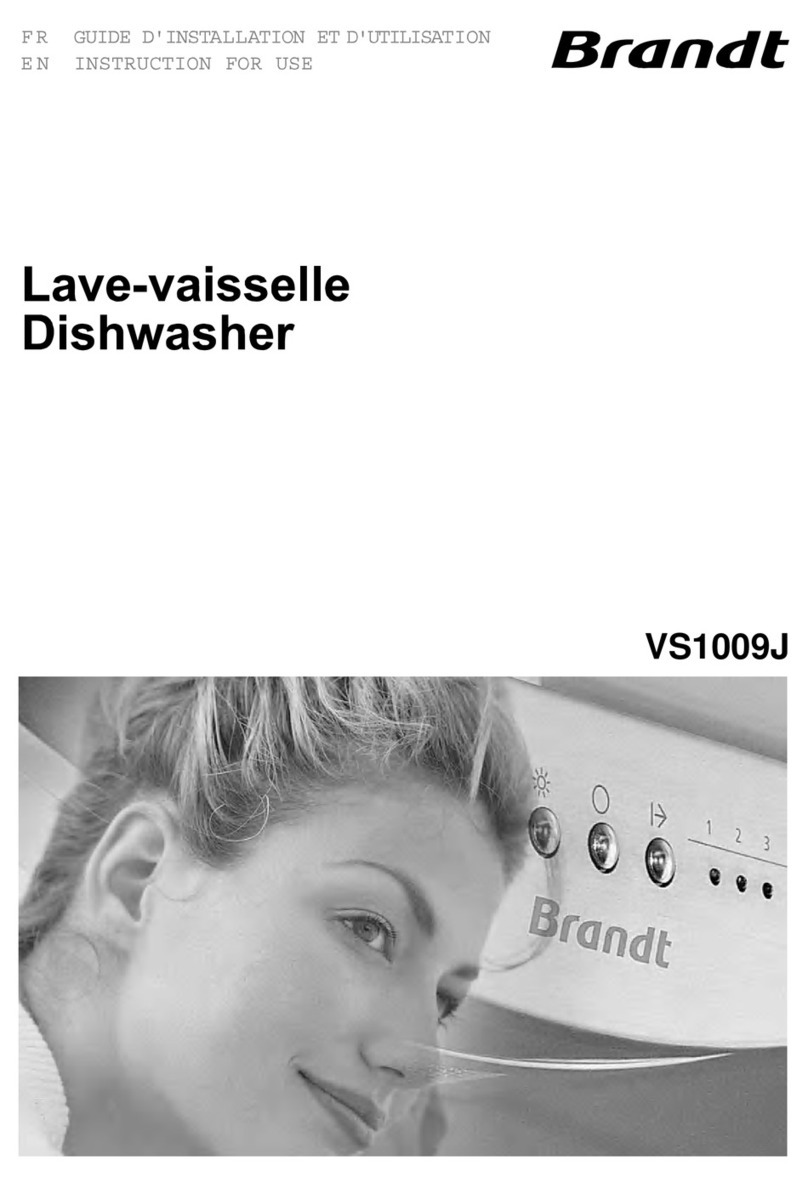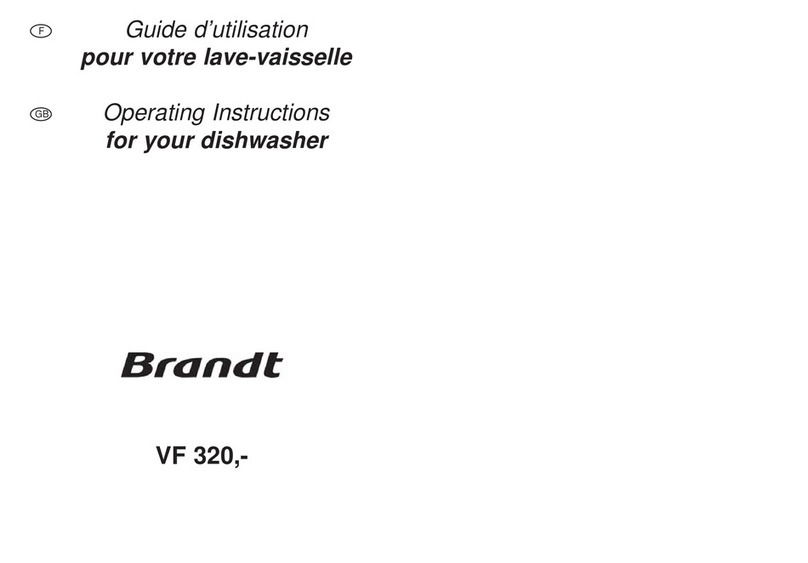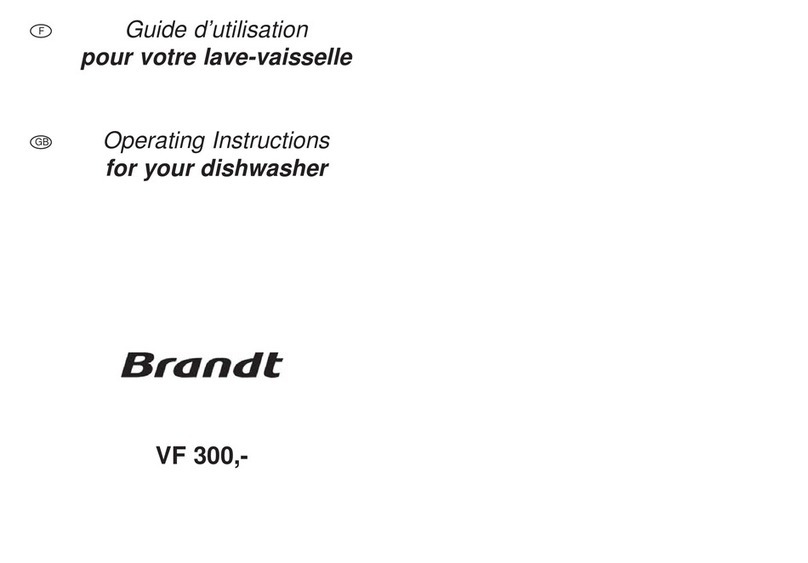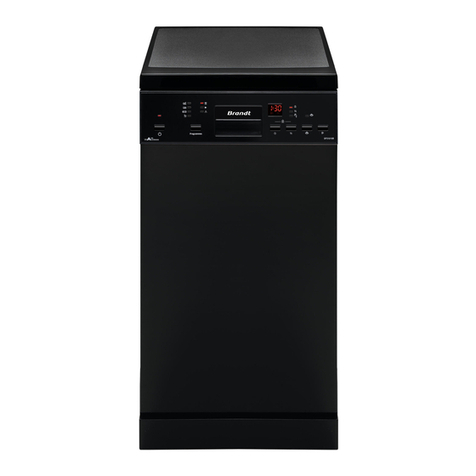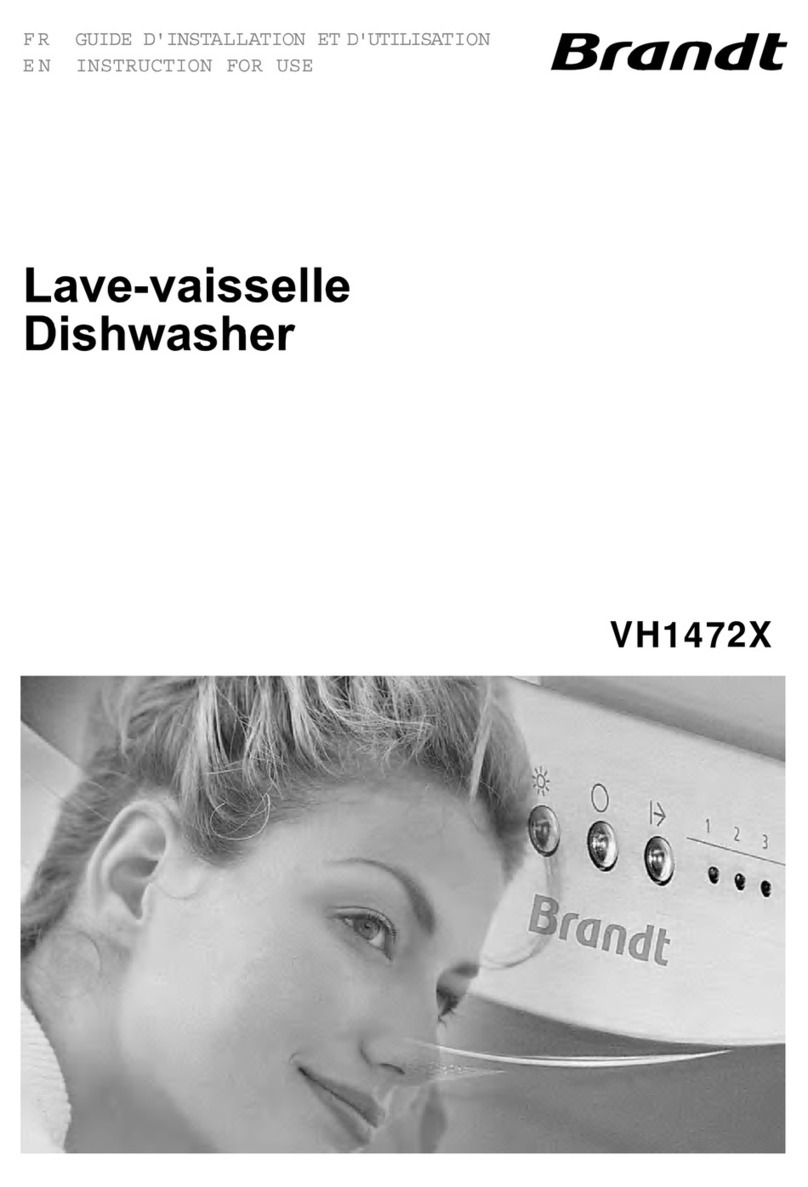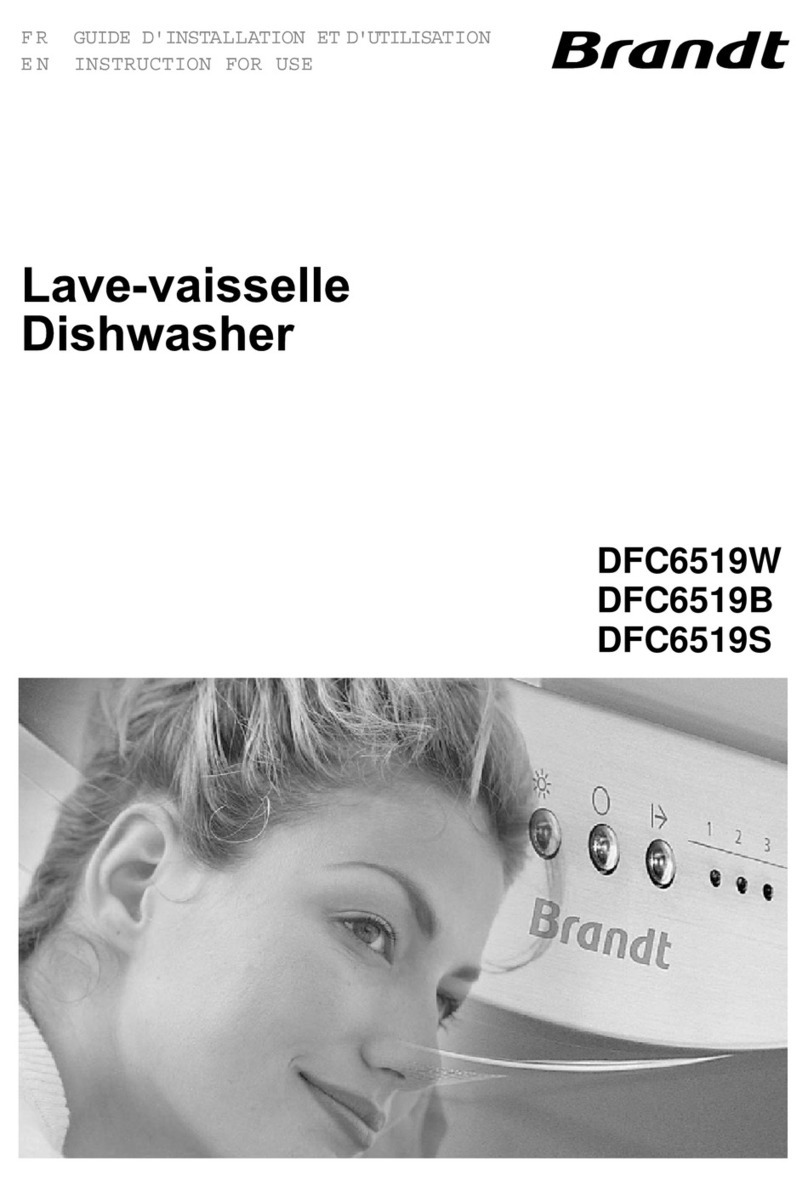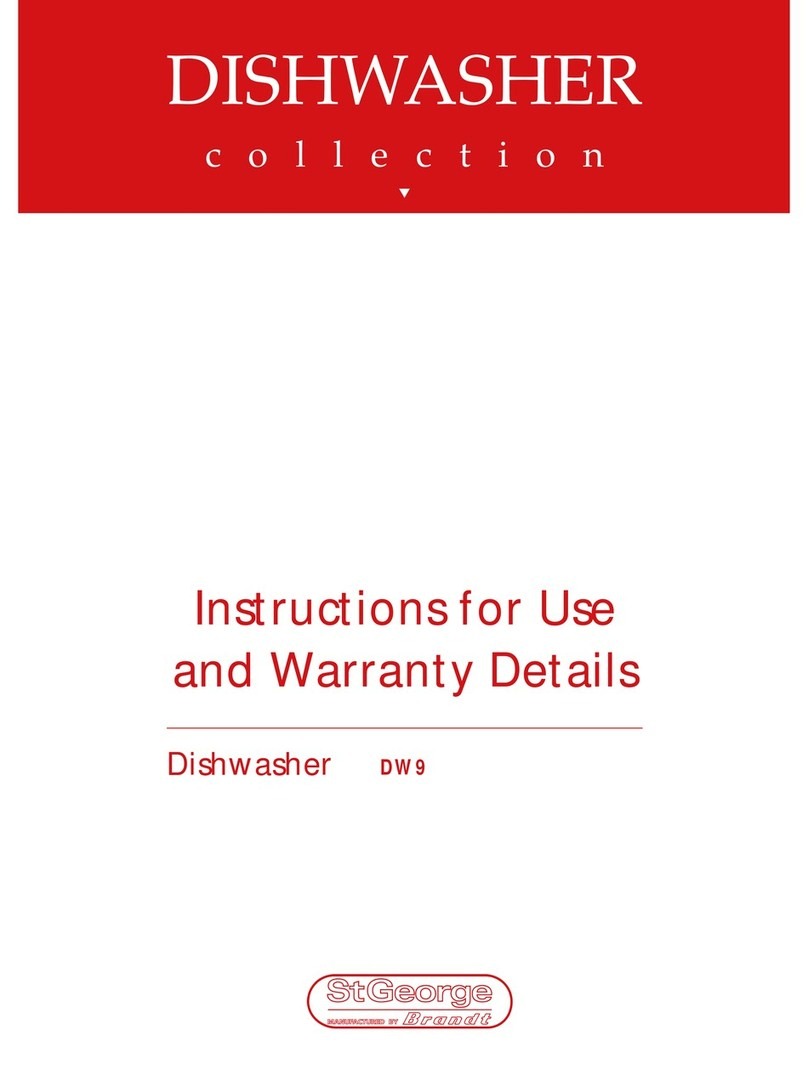
The water softener must be set manually, using the water hardness dial.
The water softener is designed to remove minerals and salts from the water, which would have
a detrimental or adverse effect on the operation of the appliance.
The higher the content of these minerals and salts, the harder your water is.
The softener should be adjusted according to the hardness of the water in your area. Your local Water Authority
can advise you on the hardness of the water in your area.
Adjusting Salt Consumption
The dishwasher is designed to allow for adjustment in the amount of salt consumed based on the hardness of
the water used. This is intended to optimise and customise the level o f salt consumption.
WATER SOFTENER
The hardness of the water varies from place to place. If hard water is used in the dishwasher, deposits will
form on the dishes and utensils.
The appliance is equipped with a special softener that uses a salt container specifically designed to eliminate
lime and minerals from the water.
Contact your local water board for information on the hardness of your water supply.
If your model does not have any water softener, you may skip this section.
Clark: British degree
fH: French degree
DH: German degree
dH=1.25 Clarke=1.78 fH=0.178mmol/l1
The manufactory setting: H3 (EN 50242)
Before using your dishwasher for the first time:
A. Set the water softener
B.
C. Fill the rinse aid dispenser
D. Fill in detergent
Please follow the steps below for adjustment in salt consumption.
1. Switch on the appliance;
2. Press the Pro gra m
softener set model within 60seconds after the appliance was
switched on;
3. Press the
your local environment, the sets will change in the following
sequence: H1->H2->H3->H4->H5->H6;
4. Press the On/Off button or no operation for 5 seconds to end the set up model.
dH mmol/l
0~90~5 0~0.94 0
10-20
6-11
1.0-2.0 9
21-3012-17 2.1-3.0 12
20
fH
0~6
7-14
15-21
Clarke
WATER HARDNESS
Selector Position Salt consumption
(gram/cycle)
18-22 31-40 22-28 3.1-4.0
41-60
23-34 4.1-6.0 30
60
29-42
35-55
61-98 43-69 6.1-9.8
H1
H2
H3
H4
H5
H6
Add 1.5kg dishwasher salt and then fill the salt container to the top with water
button for more than 5 seconds to start the water
Program button to select the proper set according to



